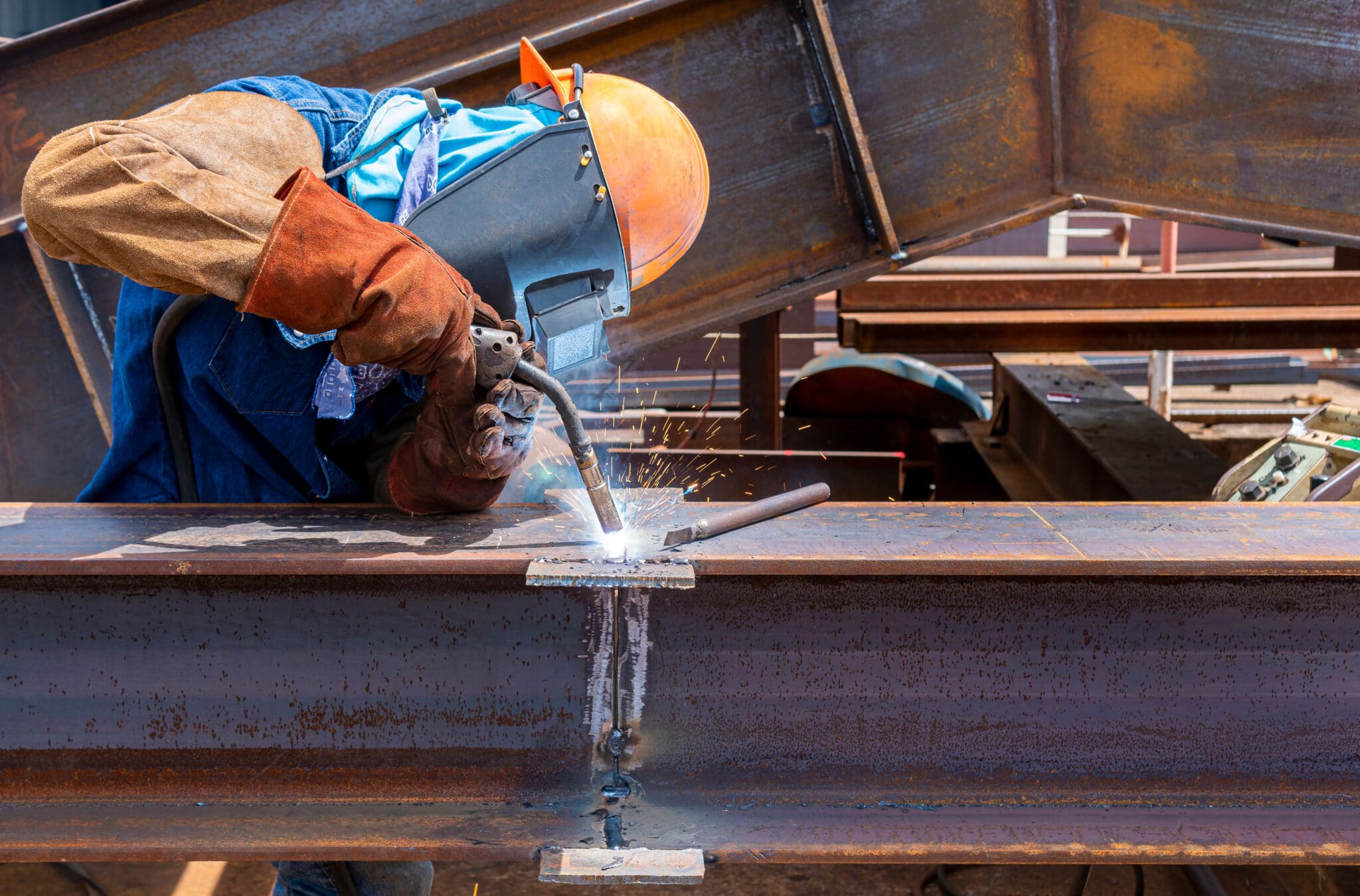
Flux-cored arc welding, or FCAW for short, is a unique welding process that combines elements of both MIG and stick welding. While less common than these other methods, FCAW has many advantages and is a popular choice for certain welding applications. Flux-cored arc welding is also sometimes called dual shield welding, a nod to the two layers of shielding it uses: a consumable flux-cored electrode and an external gas shield. In this article, we will take a closer look at what FCAW is and how it works.
FCAW welding is a type of arc welding process that uses a continuously fed consumable electrode filled with flux to create an electric arc and join two pieces of metal. The flux inside the electrode creates a protective gas shield around the weld, preventing contamination and producing high-quality welds.
FCAW uses a similar setup to MIG welding, with the addition of a flux-cored electrode. A wire feeder continuously feeds the electrode into the weld joint, and an electric arc is created between the electrode and the base metal.
As the electrode melts, it releases flux that forms a gas shield around the weld. This helps to protect the molten metal from atmospheric elements, keeping it clean and producing strong welds. The flux also acts as a deoxidizer, removing impurities from the molten pool for better welds.
Unlike other types of welding, FCAW does not require an external shielding gas, making it more convenient and cost-effective for certain applications. This also allows FCAW to be used in outdoor or windy conditions where other welding processes would struggle.
Like any welding process, FCAW has advantages and disadvantages. Let’s examine the pros and cons of this technique.
FCAW may not be suitable for all situations, but it can produce strong and reliable welds when done correctly. Despite some drawbacks, it remains a popular and widely used welding process in many industries. With the right training and equipment, Flux-Cored Arc Welding can be a valuable skill for any welder to have in their arsenal.
Flux-Cored Arc Welding has a wide range of applications and uses. Here are some practical examples:
For DIY welders, FCAW offers an attractive combination of ease of use and professional-grade results. Whether for home repairs, artistic projects, or small-scale manufacturing, FCAW lets beginning and intermediate welders complete projects quickly with a high level of quality.
You may be wondering how Flux-Cored Arc Welding compares to other popular welding techniques. Here are some key differences:
While FCAW and MIG welding use a continuous wire feed, the key difference lies in the shielding. MIG uses an external gas tank to shield the weld pool, whereas FCAW relies on the flux within the core of the wire. This makes FCAW more adaptable to outdoor conditions where wind might disperse a gas shield. However, MIG welding generally offers cleaner welds with less post-weld cleanup.
TIG welding is known for its precision and the beauty of its welds, making it the go-to for high-end fabrication, where aesthetics are as important as function. TIG can weld more types of metal and at thinner gauges than FCAW but requires significantly more skill and is much slower. FCAW, on the other hand, is faster and more forgiving, especially on thicker materials or where appearance is less critical.
Stick welding (shielded metal arc welding or SMAW) is a common and versatile technique used in construction, repair, and fabrication. While it can produce strong welds on heavy materials, it requires a high skill level to control the arc and maintain proper penetration. FCAW offers similar benefits for heavy-duty welding but with the added ease of use and faster travel speeds.
Flux-Cored Arc Welding may not be the perfect solution for every welding project, but it offers unique advantages over other techniques in certain situations. Knowing the differences between FCAW and other welding methods can help you determine which is best suited for your specific needs and achieve the highest level of quality in your welds.
If you want to get started with FCAW welding, here are some general steps to follow:
Overall, FCAW welding is a versatile and efficient welding process that offers many benefits to both professionals and DIY welders. However, it requires some knowledge and skill to be properly executed. If you are interested in trying out FCAW welding, H&K Fabrication can help you get started. We specialize in providing high-quality pipe fitting tools for pipe welders who prefer the FCAW method. Understanding the unique challenges that come with pipe welding, our range of tools is designed to ensure precision, efficiency, and safety. Browse our shop here.
© 2023 H&K Fabrication. All rights reserved. E-Commerce Website Design & E-Commerce PPC by Ranksey